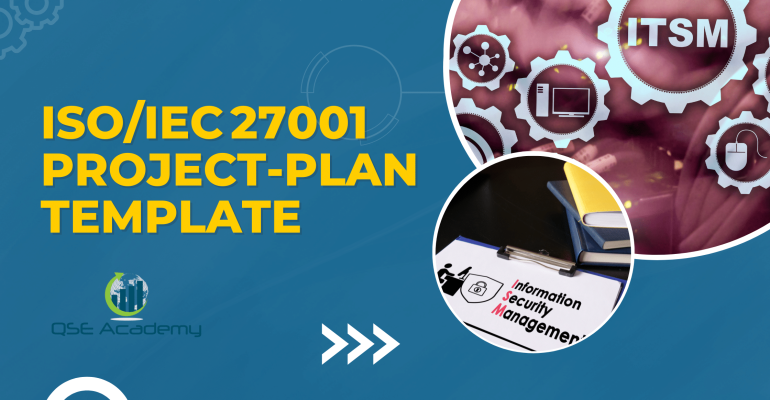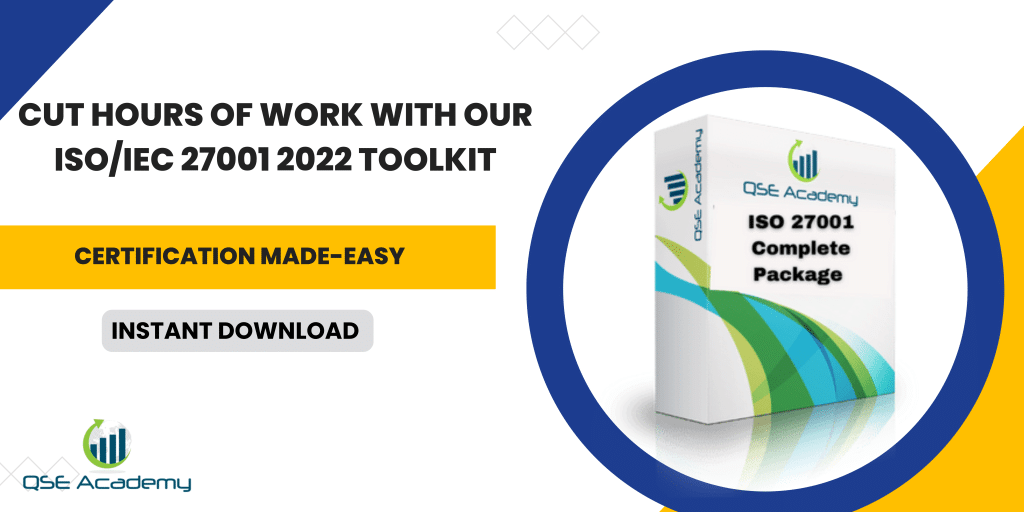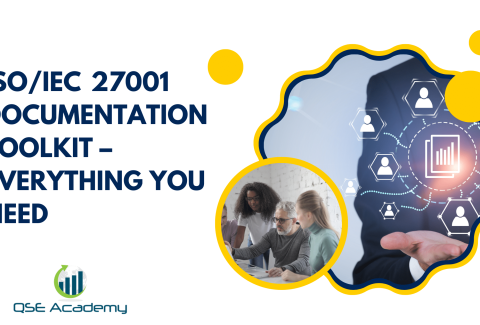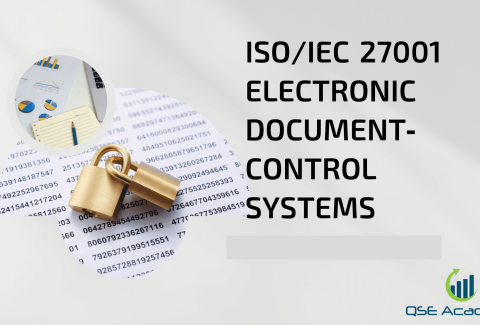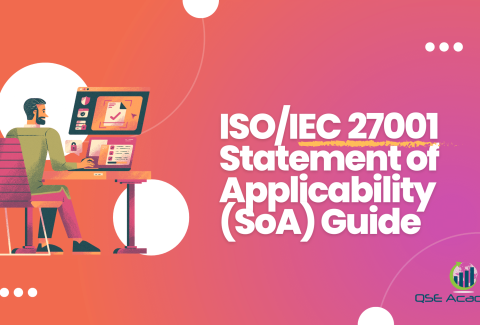ISO/IEC 27001 Project‑Plan Template
Last Updated on September 30, 2025 by Melissa Lazaro
Understanding ISO/IEC 27001 Project Planning
Let’s get real—most organizations underestimate just how much structure an ISO/IEC 27001 project really needs. On paper, it looks simple: write some policies, train a few people, run an audit. But in practice? If you don’t have a clear project plan, things start falling apart quickly.
In my experience helping companies implement ISO/IEC 27001, the ones that succeed treat the plan as their roadmap. It’s not just a list of tasks—it’s the anchor that keeps everyone aligned, from IT to HR to top management. Without it, you’ll see confusion, duplicated work, and last-minute fire drills right before the audit.
Here’s what I’ve noticed: auditors aren’t just checking if you’ve got documents in place—they want to see that your project was structured in a way that makes your ISMS sustainable. A sloppy plan gives them the impression you’re treating certification as a checkbox exercise, and trust me, they’ll dig deeper if they sense that.
Why planning matters so much
-
It forces you to clarify the scope of your Information Security Management System (ISMS).
-
It gives management a clear picture of timelines, costs, and responsibilities.
-
It reduces the risk of overlooking critical requirements in Clauses 4 through 10.
Pro Tip: Always tie your project milestones to the standard itself. For example, if your plan has a “Risk Assessment” milestone, link it directly to Clause 6.1. Doing this not only keeps your team focused, it also makes life much easier during the external audit.
One mistake I see often? Treating ISO/IEC 27001 as an “IT project.” Sure, information security involves technology, but the standard is about the entire organization. I once worked with a client who let their IT manager run the project alone. By the time HR and Legal were looped in, the policies were already drafted—and guess what? Half of them didn’t reflect the way the business actually worked. We had to go back, re-write, and it added months to the timeline.
Bottom line: a well-structured project plan isn’t a “nice to have.” It’s the difference between a smooth certification and a painful, drawn-out process.
Defining the ISO/IEC 27001 Project Scope, Objectives, and Stakeholders
Before you dive into risk assessments or draft policies, you need to nail down three things: scope, objectives, and stakeholders. This step might feel basic, but in ISO/IEC 27001 implementation, it’s where many projects lose momentum.
Here’s what I’ve noticed: when scope isn’t defined clearly, the entire ISO/IEC 27001 project plan drifts. Teams end up arguing about coverage, critical controls get overlooked, and by the time the certification audit arrives, you’re stuck trying to defend weak boundaries.
Why Defining the ISMS Scope is Critical
-
The Information Security Management System (ISMS) scope sets the boundaries—what’s included, what’s excluded.
-
It keeps project resources focused on the right processes and systems.
-
It avoids awkward questions from auditors like: “Why isn’t this department or vendor covered under your ISMS?”
Setting Clear ISO/IEC 27001 Project Objectives
Let’s be real: management often wants to shrink objectives to save time and budget. That can backfire. A project with narrow goals might look efficient, but it often fails to address real risks.
Pro Tip: Always align project objectives with business strategy. If your company handles client data, protecting confidentiality should be front and center.
Identifying ISO/IEC 27001 Stakeholders Early
One of the biggest mistakes? Treating ISO/IEC 27001 as “just an IT project.” Sure, IT plays a big role—but HR, Legal, Compliance, and even third-party vendors are just as critical.
I’ve seen it firsthand: a mid-size tech firm excluded external vendors from its scope. On paper, it looked tidy. In practice, those vendors had access to sensitive customer data. The auditor flagged it, and the company had to redo half the project. Months lost.
Pro Tip: Create a simple stakeholder map at the start. Who owns which processes? Who approves budgets? Who needs to be trained? Getting this clear upfront saves endless headaches later.
Developing the ISO/IEC 27001 Work Breakdown Structure (WBS)
Here’s the truth: no matter how motivated your team is, an ISO/IEC 27001 project plan without structure quickly turns into chaos. That’s where the Work Breakdown Structure (WBS) comes in—it’s basically your project’s blueprint.
In my experience, organizations that skip this step end up with endless meetings, unclear responsibilities, and missed deadlines. On the flip side, those that use a WBS move steadily, because every task is mapped, tracked, and connected to the bigger goal: certification.
Breaking the ISO/IEC 27001 Project Into Phases
Think of the WBS as breaking a big mountain into manageable hikes. Typical ISO/IEC 27001 phases include:
-
Gap Analysis (where are you vs. where you need to be).
-
Risk Assessment & Treatment.
-
Controls Implementation (Annex A).
-
Documentation (policies, procedures, SoA).
-
Training & Awareness.
-
Internal Audit & Management Review.
-
Certification Audit Prep.
Pro Tip: Don’t push documentation to the last minute—it’s one of the heaviest lifts and auditors will comb through it line by line.
Tools to Manage the ISO/IEC 27001 WBS
-
Gantt charts if you want a visual timeline.
-
Kanban boards (like Trello or Jira) if your team works better with flexible task tracking.
-
Excel or project templates for SMEs who prefer simplicity.
What matters most isn’t the tool, it’s the clarity. Everyone should know: what needs to be done, who’s doing it, and when it’s due.
Common Mistakes to Avoid
-
Treating the WBS as “just a document” instead of a living project tracker.
-
Overloading one department (usually IT) with 70% of the tasks.
-
Forgetting dependencies—like scheduling training only after policies are finalized.
I worked with a client who rushed through their WBS. By the time we hit the audit prep phase, half the security controls were unfinished because they hadn’t linked them to risk treatment activities. We had to backtrack, and the certification was delayed by three months.
Bottom line: the ISO/IEC 27001 Work Breakdown Structure isn’t paperwork—it’s your survival kit. Use it well, and you’ll keep the project moving without burning out your team.
ISO/IEC 27001 Resource Allocation and Roles
Here’s what I’ve noticed: when ISO/IEC 27001 projects drag on, it’s rarely because people don’t care. It’s usually because nobody knows exactly who’s supposed to do what. That’s why resource allocation and clear roles and responsibilities are non-negotiable in any ISO/IEC 27001 project plan.
Without this, tasks get duplicated, deadlines slip, and eventually someone says: “I thought IT was handling that.”
Why Resource Allocation Matters in an ISO/IEC 27001 Project Plan
-
Ensures critical tasks (like risk assessment, SoA, or training) don’t fall through the cracks.
-
Prevents overloading one department—usually IT—with responsibilities that should be shared across HR, Legal, and Management.
-
Builds accountability: everyone knows what they own.
Using a RACI Matrix for ISO/IEC 27001 Roles
A simple RACI (Responsible, Accountable, Consulted, Informed) chart works wonders. Here’s an example tailored for ISO/IEC 27001:
| Activity / Deliverable | Responsible (R) | Accountable (A) | Consulted (C) | Informed (I) |
|---|---|---|---|---|
| Define ISMS Scope & Objectives | Project Manager | Top Management | IT, Legal, HR | All Staff |
| Risk Assessment & Treatment | Risk Officer | CISO | IT, Operations | Management Review |
| Statement of Applicability (SoA) | ISMS Lead | CISO | IT, HR | Internal Audit Team |
| Policies & Procedures Documentation | Documentation Lead | CISO | HR, Legal | All Staff |
| Training & Awareness | HR Lead | HR Director | ISMS Lead, IT | All Employees |
| Internal Audit | Internal Auditor | Top Management | Department Heads | Staff |
| Certification Audit Preparation | ISMS Lead | Project Manager | All Departments | Top Management |
Pro Tip: Don’t assign “Accountable” to committees. Always tie it to a single role or person—otherwise decisions get stuck.
Common Pitfalls in ISO/IEC 27001 Resource Planning
-
Overloading IT: Yes, they’re key players, but ISO/IEC 27001 is an organizational standard, not just a tech project.
-
No backup resources: If your ISMS lead goes on leave, who steps in?
-
Unclear management role: If top management isn’t visibly accountable, auditors will flag it.
I once supported a financial services company where everything was assigned to IT. When the auditors asked about HR’s role in access control or Legal’s role in compliance, the answers were blank stares. The project nearly failed certification until we redistributed responsibilities using a RACI approach.
Bottom line: your ISO/IEC 27001 project roles and responsibilities chart isn’t just a nice table—it’s the backbone of project accountability.
Integrating the ISO/IEC 27001 Risk Assessment and Treatment Plan
Here’s the deal: if your ISO/IEC 27001 project plan doesn’t connect smoothly with risk assessment, you’re setting yourself up for extra work later. Risk management isn’t a separate task you bolt on at the end—it’s the heart of the ISMS.
In my experience, organizations that weave the risk assessment and treatment plan directly into the project timeline always move faster and face fewer audit findings. The ones that leave it as an afterthought? They end up with mismatched controls, messy documentation, and a painful certification audit.
Why Risk Assessment Integration Matters
-
Ensures every control in your Statement of Applicability (SoA) is tied to a real, documented risk.
-
Avoids the trap of “checkbox” controls that don’t actually apply to your business.
-
Makes the certification audit smoother, because auditors see the logic from risk → control → evidence.
Practical Step: Build a Simple ISO/IEC 27001 Risk Register
A straightforward risk register linked to your project plan is all you need. Here’s a sample format you can adapt:
| Risk ID | Description of Risk | Likelihood (1–5) | Impact (1–5) | Risk Score | Treatment Option (Avoid/Reduce/Transfer/Accept) | Linked Control (Annex A) | Owner | Status |
|---|---|---|---|---|---|---|---|---|
| R-01 | Unauthorized access to HR data | 4 | 5 | 20 (High) | Reduce (implement access controls, MFA) | A.9 Access Control | HR Manager | In Progress |
| R-02 | Loss of customer data via email | 3 | 4 | 12 (Med) | Reduce (email encryption, training) | A.13 Communications Sec. | IT Manager | Planned |
| R-03 | Third-party vendor breach | 2 | 5 | 10 (Med) | Transfer (vendor agreements, monitoring) | A.15 Supplier Relationships | Legal Lead | Completed |
Pro Tip: Don’t overcomplicate. A risk register with 15–30 clear entries is better than a 200-row spreadsheet nobody updates.
Common Pitfalls to Avoid
-
Waiting too long: Some teams delay risk assessment until just before the audit. By then, it’s too late to link risks with implemented controls.
-
Copy-pasting risks: Using generic risks from templates without tailoring them to your real business environment. Auditors will notice.
-
Ignoring treatment ownership: If no one “owns” the treatment, it never gets done.
I once worked with a manufacturing client who ignored their vendor risks until the final month. When auditors asked for supplier monitoring evidence, they had nothing. The result? A three-month delay and a painful scramble to rewrite contracts.
Bottom line: your ISO/IEC 27001 risk assessment and treatment plan isn’t just compliance paperwork—it’s the glue that holds your ISMS together.
Monitoring, Communication, and Reporting in an ISO/IEC 27001 Project Plan
Let’s be honest—most ISO/IEC 27001 projects don’t fail because of technical gaps. They fail because communication breaks down and progress isn’t tracked. A strong monitoring and reporting system inside your project plan keeps everyone aligned, from frontline staff to top management.
Why Monitoring Matters in ISO/IEC 27001 Projects
-
Shows auditors that management is actively engaged (Clause 9).
-
Keeps project risks visible and under control.
-
Provides early warning when milestones are slipping.
Using KPIs to Track ISO/IEC 27001 Project Progress
Auditors love to see evidence that you’re tracking performance—not just winging it. KPIs should be simple, measurable, and linked to your ISMS objectives.
Here’s a sample KPI dashboard you can adapt:
| KPI / Metric | Target Value | Reporting Frequency | Owner |
|---|---|---|---|
| % of ISO/IEC 27001 project tasks completed | ≥ 90% by project deadline | Monthly | Project Manager |
| Risk assessments completed on time | 100% | Quarterly | Risk Officer |
| Training & awareness completion rate | ≥ 95% of staff trained | Quarterly | HR Lead |
| Internal audit findings closed | 100% closure within 30 days | After each audit | ISMS Lead |
| Management review meetings held | Minimum 2 per year | Semi-annual | Top Management |
Pro Tip: Don’t drown management in technical details. Instead, summarize KPIs in a simple dashboard they can scan in under 5 minutes.
Best Practices for ISO/IEC 27001 Project Communication
-
Use a central dashboard (like Confluence, Teams, or even Excel) for project visibility.
-
Hold short, regular check-ins instead of long monthly marathons.
-
Keep communication two-way: allow staff to raise concerns about risks or controls.
Common Pitfalls in Reporting
-
Overcomplicating KPIs: Fancy metrics nobody understands or updates.
-
Reporting too late: By the time issues are flagged, the audit is around the corner.
-
No management engagement: If management reviews are just “tick-box” exercises, auditors will pick up on it immediately.
In one project I managed, the company used a simple traffic-light dashboard for KPIs. Green meant on track, yellow meant minor delays, red meant critical. That one slide kept management engaged all the way through and helped the team fix issues early—long before the certification audit.
Bottom line: your ISO/IEC 27001 project monitoring and reporting system doesn’t need to be fancy. It needs to be clear, consistent, and visible.
ISO/IEC 27001 Audit Preparation and Continuous Improvement
Here’s the truth: passing the ISO/IEC 27001 certification audit isn’t just about looking good on audit day. It’s about showing that your ISMS is built on real processes and a mindset of continuous improvement. The best project plans don’t stop at certification—they evolve into long-term improvement cycles.
Why Audit Preparation Matters
-
Certification bodies look for evidence of readiness, not last-minute fixes.
-
Internal audits and management reviews are your “dress rehearsals” for Stage 1 and Stage 2 audits.
-
A solid prep phase reduces the stress that usually builds in the final month.
ISO/IEC 27001 Pre-Audit Checklist
Here’s a simple table you can integrate into your project plan:
| Audit Preparation Task | Owner | Status (Pending/In Progress/Done) | Notes / Evidence Location |
|---|---|---|---|
| Internal audit completed (Clause 9.2) | Internal Auditor | Audit report saved in ISMS folder | |
| Management review conducted (Clause 9.3) | Top Management | Meeting minutes approved | |
| Risk assessment & SoA updated | Risk Officer | Risk register + SoA v2 | |
| Policies & procedures reviewed/approved | Documentation Lead | Version-controlled docs | |
| Training & awareness records available | HR Lead | LMS / attendance sheets | |
| Nonconformities closed from internal audit | ISMS Lead | CAPA log updated | |
| External auditor logistics confirmed | Project Manager | Audit schedule & contacts |
Pro Tip: Walk through this checklist at least 6 weeks before the certification audit. That buffer gives you time to fix any gaps without panicking.
Continuous Improvement Beyond Certification
Passing the audit is just the beginning. Clause 10 of ISO/IEC 27001 expects you to keep improving. That means:
-
Reviewing risks regularly, not just once a year.
-
Updating controls when new threats (like AI-driven attacks) emerge.
-
Keeping awareness training fresh—nobody wants the same boring slides every year.
I once worked with a healthcare provider that treated certification as the “end.” Two years later, they were blindsided in their surveillance audit because they hadn’t updated their risk register since day one. Don’t make that mistake. Treat your project plan as a living document.
Bottom line: your ISO/IEC 27001 audit preparation checklist gets you through certification, but your continuous improvement mindset is what keeps you certified.
FAQs About ISO/IEC 27001 Project Plans
1. How long does an ISO/IEC 27001 project plan take to complete?
In my experience, small and mid-size companies usually need 6–12 months to fully implement their ISMS and pass certification. Larger organizations may take 12–18 months depending on scope, resources, and complexity. The key factor isn’t size—it’s how committed top management is to supporting the project.
2. Can I use a generic ISO/IEC 27001 project plan template?
Yes, but only as a starting point. A generic template gives you structure, but auditors expect your project plan to reflect your actual risks, processes, and scope. The strongest plans are tailored to your organization, not just copy-pasted from a guide.
3. What’s the #1 reason ISO/IEC 27001 projects fail?
Honestly, it’s lack of top management engagement. If leadership sees ISO/IEC 27001 as “just an IT task,” projects stall. Successful plans always include management in defining objectives, allocating resources, and reviewing progress.
Conclusion: Turning Your ISO/IEC 27001 Project Plan Into Action
Let’s be real—ISO/IEC 27001 isn’t something you can “wing.” Without a clear project plan, even the best teams end up spinning their wheels, missing deadlines, and stressing out before the audit. But when you’ve got a structured roadmap—scope defined, roles assigned, risks linked to controls—you move with confidence instead of chaos.
In my experience guiding companies across industries, the organizations that succeed aren’t the ones with endless resources. They’re the ones with a clear plan and strong accountability. That’s what gets you certified faster, with fewer surprises.
Here’s the takeaway:
-
Define your scope, objectives, and stakeholders early.
-
Use a Work Breakdown Structure to break the project into realistic phases.
-
Assign roles and responsibilities so nothing slips through the cracks.
-
Integrate risk assessment into the project timeline—not as an afterthought.
-
Track progress with KPIs and regular reporting.
-
Treat certification as the start of continuous improvement, not the finish line.
Based on years of hands-on experience with ISO/IEC 27001 projects, I can tell you this: the plan you build today is the foundation for your long-term security and compliance tomorrow.
Next step: Download our ready-to-use ISO/IEC 27001 Project-Plan Template and start mapping your certification journey with clarity and confidence.
Melissa Lavaro is a seasoned ISO consultant and an enthusiastic advocate for quality management standards. With a rich experience in conducting audits and providing consultancy services, Melissa specializes in helping organizations implement and adapt to ISO standards. Her passion for quality management is evident in her hands-on approach and deep understanding of the regulatory frameworks. Melissa’s expertise and energetic commitment make her a sought-after consultant, dedicated to elevating organizational compliance and performance through practical, insightful guidance.

